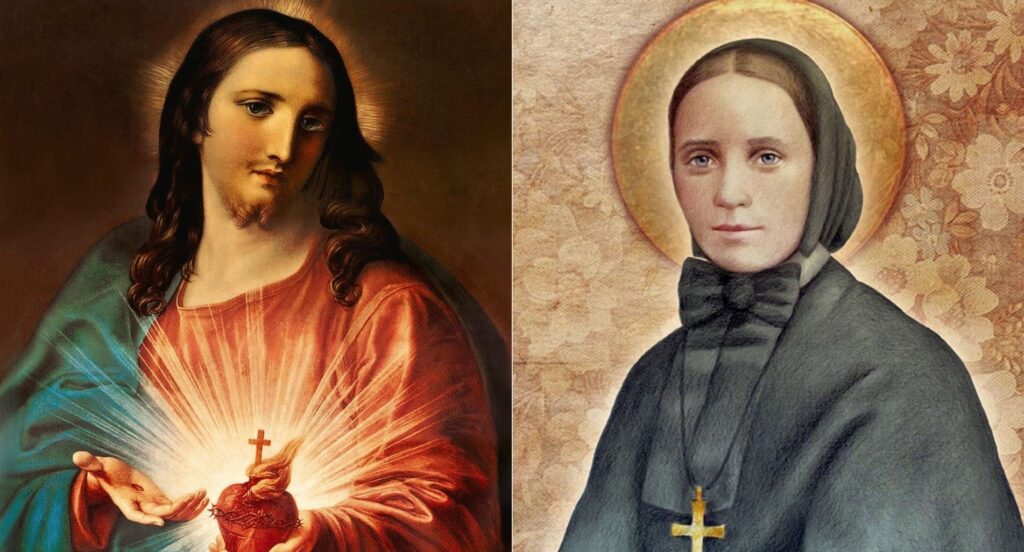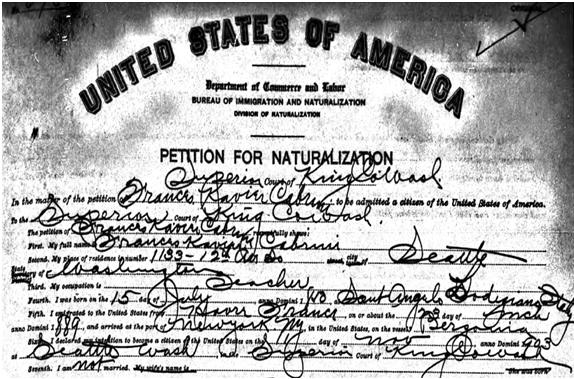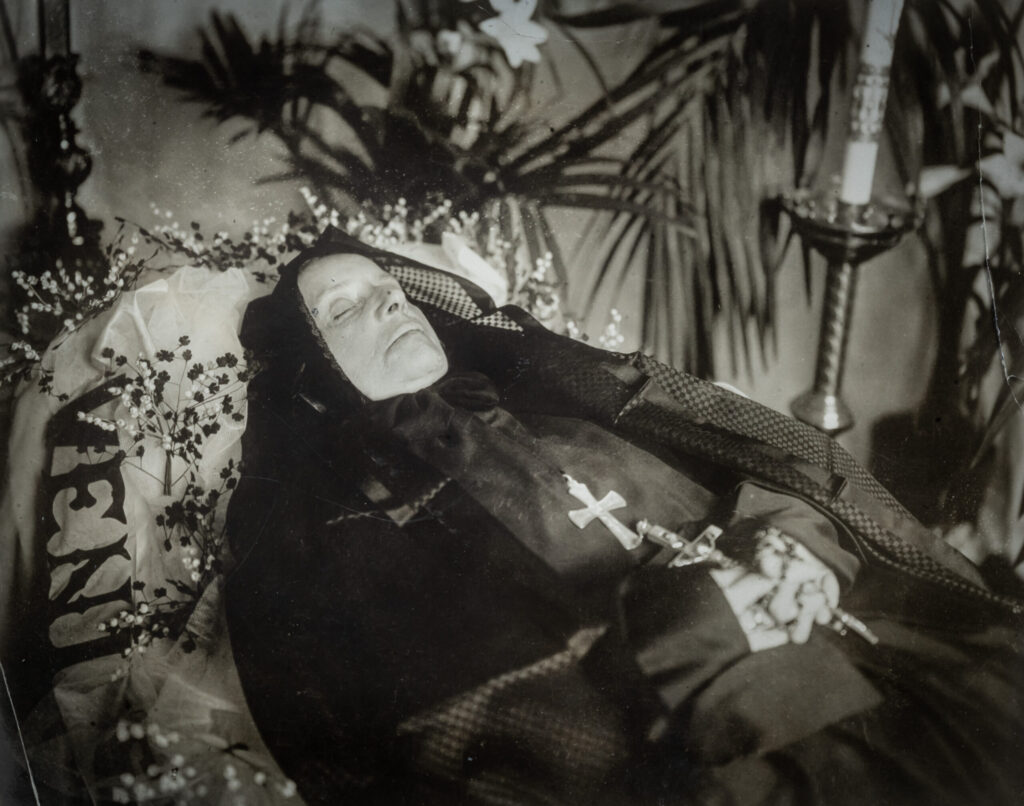

The Catholic Patriotic Minute: Saint Frances Cabrini
Catholics For Catholics Special Edition | July 13th, 2025
WATCH VIDEO below.
Saint Frances Cabrini, The First U.S. Citizen to Be Canonized a Saint
Saint Frances Cabrini–the first United States citizen to be canonized a saint– is well-known for her external works of charity for others. But, what is less known about Mother Cabrini is the depth of her interior life, where her devotion to the Sacred Heart of Jesus was centered. Mother Cabrini’s desire to save souls and become a missionary and saint began in her childhood.

Born on July 15, 1850, in Sant’Angelo Lodigiano, Italy, Cabrini grew up desiring to imitate her favorite saints. When Saint Margaret Mary Alacoque was beatified, fourteen-year-old Frances also sought to be united with the Sacred Heart of Jesus. She looked up to Saints Rose of Lima and Mariana of Quito, who consecrated themselves to God and served the poor and the sick. She wanted to convert people in China, just as Saint Francis Xavier did in the Orient. As a little girl, Cabrini even dressed her dolls as nuns and would float paper boats with violets, which resembled the missionaries, in a stream to “faraway countries.”1 Trusting God even amidst extreme suffering was also an early practice for Cabrini. Six of her ten siblings died before they reached adulthood, and both her parents died by the time Cabrini was twenty. Cabrini postponed her plans to join a religious order temporarily, in order to take care of her disabled sister.
Despite initially being refused from two religious orders in her city of Vidardo, Cabrini prayed, performed mortifications, and constantly appealed to the religious. Eventually, her bishop assigned her to an orphanage, House of Providence, where she unfortunately was mistreated by the founder for six years and subsequently departed with twenty young women to form their own religious order, with the bishop’s blessing. Cabrini hoped that her new religious order, the Institute of the Salesian Missionaries of the Sacred Heart, with Saints Francis Xavier and Margaret Mary Alacoque as its patrons, would serve and hopefully convert those in China.

Yet, when Cabrini sought papal approval for her new religious order in 1889, Pope Leo XIII asked her to go “[n]ot to the East, but to the West.” In response to instability in Italy, tens of thousands of Italians were emigrating to the United States each year, with a mass wave of Italian immigrants between 1880 and 1920 before immigration began to be limited in 1924. By the late 1800s, the Italian immigrants either chose or were often manipulated into working jobs of low wage, which led them into grave poverty. Their spiritual lives were even more in peril, as many Italians stopped attending Mass due to the lack of Italian-speaking priests and because many could not follow the common practice, at this time, in American churches of renting out pews for fundraising purposes. The Pope’s request was for Mother Cabrini and her sisters to serve the Italian immigrants in New York City, with the goal of leading them back to their Catholic faith.
Submitting to the Holy Father, Cabrini surrendered her dream of converting people in China and would face her long lasting fear of the sea joyfully, by crossing the Atlantic twenty-seven times in her lifetime for her missionary work. Despite the efforts of the Archbishop of New York to make Cabrini return to Italy and despite the anti-Catholic sentiments and even riots, Cabrini and her sisters collected money to fund orphanages and schools. They invited the Italian Catholics back to Mass and the sacraments. When she discovered that Italians were refused medical care in hospitals, Cabrini found a way to fund a hospital and named it Columbus Hospital to unite the Italian immigrants and Protestant Americans. Since the majority of Cabrini’s missionary work was in the United States, she became a citizen in 1909.

Cabrini’s work defending human dignity and primarily seeking Catholic conversions and reversions would reach other communities in the United States, namely Chicago, Denver, Los Angeles, New Orleans, and Seattle, and outside the United States, in Nicaragua, Panama, Argentina, England, France, Italy, and Spain. She established sixty-seven institutions, including hospitals, schools, and orphanages, in her efforts to defend the vulnerable, and she established convents and inspired vocations to the Institute, which welcomed over a thousand sisters by 1907. At the forefront of her mission was the salvation of souls. In a letter to her sisters, Cabrini asserted, “ I would like to convert all Protestants. This is a mission I have very much at heart, and you, my dear daughters, by the duties of your holy vocation, find yourselves engaged in this sublime mission of converting souls. Do attend to it with great zeal and fervor, and try to multiply the grapes of the mystic vine of Christ.”2
Pope Pius XII honored Cabrini’s missionary work in the papal encyclical Exsul Familia Nazarethana, which recognized both the right to migrate, especially for those seeking refuge, and the duty of nations to protect their sovereignty. Having stated that justice must be primary to charity, Pope Pius XII echoed Cabrini’s call to nations to find ways to unite charity with justice in their treatment towards the vulnerable. During her canonization mass in July of 1946, Pope Pius XII reflected on Mother Cabrini’s journey to sainthood, rooted in her founding of the Missionaries of the Sacred Heart of Jesus, which,
[S]he knew how to defend and maintain with wise firmness because in this title there thrilled that zeal for the salvation of souls, which, setting her heart on fire, spurred her on to prayer and to offer every suffering and pain and action in every part of the world in order to gather together faithful adorers of the Divine Heart. Among her heroic virtues the most heroic was her charity for Christ. Her own heart free from every attachment to herself and to things of the world found all its happiness and peace and riches in Christ, Who lived and dwelt in her soul while at the same time her soul dwelt in the Heart of Jesus.

Just as Cabrini imitated saints in her missionary work and devotion to Jesus Christ, American Catholics today should also imitate Saint Frances Cabrini in her efforts to save souls through conversions, to defend human dignity, and to surrender to His Sacred Heart and the will of God. The United States would certainly be more Catholic if we did so.
1 All Things Are Possible: The Selected Writings of Mother Cabrini, edited by Dawn Marie Beutner
2 Letters from the Voyages of Saint Frances Cabrini, edited by Michael LaMorte
For more Catholic Patriotic Minutes, visit CATHOLICUSA.COM
Save and Share This Catholic Patriotic Minute!
